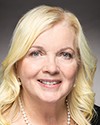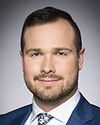That's your time. Thank you for your testimony.
Now we will turn to MP Longfield for six minutes.
Evidence of meeting #86 for Science and Research in the 44th Parliament, 1st Session. (The original version is on Parliament’s site, as are the minutes.) The winning word was communities.
A recording is available from Parliament.
11:25 a.m.
Liberal

The Chair Liberal Valerie Bradford
That's your time. Thank you for your testimony.
Now we will turn to MP Longfield for six minutes.
11:25 a.m.
Liberal

Lloyd Longfield Liberal Guelph, ON
Thank you, Chair, and thank you to the witnesses.
I'd like to get back to our study on research and the challenges we're facing. I'm really interested in the report that's been generated. I think it has base information that we need for this study, and the earlier we can get a hold of the report so we can go through it, the better.
My question, starting with Mr. Henheffer and then going over to Mr. Cockney, is about how research is different in the Arctic. With research in southern Canada, generally you have a university attached to a geographic area that applies for research funding and does research based on geography, with ties to other southern universities. In the Arctic, we don't have a university network, and often universities have to apply for NSERC funding and cobble together research grants to do Arctic research. I'm thinking of the PEARL research station up in Ellesmere Island in Eureka, where the University of Toronto has a main presence, but tries to cobble together enough research to study climate change and study permafrost with other universities around the world.
Could you talk about how we can provide a different way of networking research funds together that could either be led by a southern university or led by the people in the Arctic?
11:25 a.m.
Chief Executive Officer, Arctic Research Foundation
The challenges of doing research in the Arctic are enormous. It's much more expensive. We run a fleet of nearshore research vessels, and the cost to run them in the north is huge. One of them, our vessel that gets the most work, is based out of Halifax and transits north every year, so we have 10 to 14 days' worth of cost just to get up there. We have other ships that are kept in the north, but for a ship that large, there isn't the infrastructure to do the maintenance that it needs, at least not in the geographical area where it normally works.
There are other challenges in addition to cost. Of course, these are settled land claims. This is the Inuit and northern indigenous peoples' backyards, so collaboration is key. We can't just start with the universities. We need to start with the communities. They need to have a say in where the funding goes. However, as I mentioned in my remarks, given the administrative burden that they have to go through, the way these funding structures are set up with universities just doesn't work for the north. It's based on a southern way of thinking, and that needs to change. There are a number of ways that it can be simplified, but those details are a bit too complex to go into today—
11:30 a.m.
Liberal

Lloyd Longfield Liberal Guelph, ON
Can I interrupt? Those are very important details, and if they're not in the report, could you give us something in writing that suggests some alternate ways of going about this?
11:30 a.m.
Chief Executive Officer, Arctic Research Foundation
Absolutely. They are in the report, so you'll see them in our strategy, but it's a lot to go into in a three-minute answer.
One key thing you mentioned that I really want to highlight is that, because we're a non-profit, we lose money every year in delivering our programming. We charge as little as we can, but that's still too expensive for most scientists. There simply aren't grants for ship time in the Arctic, or even for using our mobile labs in the Arctic for developing infrastructure. There are research grants and grants to pay universities to pay researchers, but rarely is there enough money for ship time, and it's based on southern costs, not northern costs.
What we do is stack programs. If they're operating in the same geographical area, we'll bring in the University of Manitoba and the University of Toronto, and we'll all work together. In that way it can be more affordable. Stacking programs is one important thing, but coordination and collaboration in general are key.
11:30 a.m.
Liberal

Lloyd Longfield Liberal Guelph, ON
Thank you.
We have a couple of minutes left, Mr. Cockney, to fill in some of the....
We just did a research study on indigenous traditional knowledge and the different approaches indigenous people use towards science. Going through indigenous communities could be a way for us to fund research in the Arctic. Could you speak to that and whether there's an opportunity there that we could explore in our report?
11:30 a.m.
Community Engagement and Northern Specialist, Arctic Research Foundation
Speaking of opportunities, even the U.S. government has adopted a policy to integrate into every federal agency indigenous knowledge when it comes to science and research. For example, NASA has approached us, and me especially, to advise it on how to approach these communities in the north and engage them in science and research. Really, it's community-based, asking the people, “What are your priorities in research and science?”
It's going in the right direction. I hope researchers are going in the right direction in Canada too.
11:30 a.m.
Liberal

Lloyd Longfield Liberal Guelph, ON
It's about replacing the word “university” with the word “community” so communities have access to research funds.
11:30 a.m.
Community Engagement and Northern Specialist, Arctic Research Foundation
Yes. More and more, even for us with the Arctic Research Foundation, we go into a community and ask them, “What are your priorities?” We did a lot of work in Gjoa Haven, especially with the discovery of the ships, and that was by engaging the community first.
11:30 a.m.
Liberal

Lloyd Longfield Liberal Guelph, ON
I know I'm close on time, so I'll just thank you for being here and contributing. I look forward to the written submissions.
11:30 a.m.
Liberal

The Chair Liberal Valerie Bradford
Thank you, MP Longfield. That was great.
Now we turn to MP Blanchette-Joncas for six minutes.
11:30 a.m.
Bloc

Maxime Blanchette-Joncas Bloc Rimouski-Neigette—Témiscouata—Les Basques, QC
Thank you, Madam Chair.
I would like to acknowledge the witnesses here today for the start of this vital study.
My first question is for Mr. Allard.
Mr. Allard, I would like to congratulate you on your career to date. You're a professor emeritus. It's an honour to welcome you here today. I had the privilege of visiting the Centre for Northern Studies, where you have been a member for many years. I gather that you were even a member as an undergraduate. Your work and commitment over the past few years are now being recognized.
I'll jump straight to the questions, which are vital today. You talked about melting permafrost and its impact. How can we prepare for and adapt to the permafrost situation? This affects other countries as well. Climate change transcends borders.
How can we work with our closest neighbours and allies, such as the United States and Greenland, to take more action in the face of melting permafrost?
11:30 a.m.
Professor Emeritus, Center for Northern Studies, Laval University, As an Individual
Research networks are working closely together, particularly Alaska and Canada. Moreover, we're starting to share work methods. For example, we're sharing permafrost mapping with the Inuit communities and on the communities' land, so that we can help them adapt.
In this committee, we're currently talking about setting up programs or making the best possible scientific programs inspired by the communities, in order to work with them. The people in the communities—we have an example next to me—are very familiar with their issues.
Many academics have already started doing this, for example in our network, at Université Laval, but also in ArcticNet. People from this network will be giving a presentation later. Relationships with Inuit and indigenous communities in northwestern Canada have been established. These relationships are very strong.
All Canadian researchers have a great deal of experience. However, we have funding issues. In addition, it's now time for the communities themselves to establish research needs and research partnerships.
I just want to mention briefly that a number of academics, particularly in our area, are more than willing to work together.
11:35 a.m.
Bloc

Maxime Blanchette-Joncas Bloc Rimouski-Neigette—Témiscouata—Les Basques, QC
Mr. Allard, I would like you to elaborate on this vital collaborative effort. This effort is needed in order to forge ties with people, particularly in indigenous communities. Each community takes a completely different approach. We understand and respect that. What are these differences?
Quebec has a certain approach for working with indigenous communities, particularly in Nunavik. However, this approach seems a bit different from the one used in the rest of Canada. Are you doing certain things?
The Centre for Northern Studies has over 60 years of expertise. You certainly have had experiences that we can draw on today to optimize our effectiveness.
11:35 a.m.
Professor Emeritus, Center for Northern Studies, Laval University, As an Individual
In my opinion, yes. I'm thinking specifically about permafrost mapping in communities and adaptation work on the ground.
In Nunavik, for example, the main concern of Inuit communities is access to resources for hunting and fishing. This access has become less and less safe as a result of climate change. There are also issues with the construction and foundations of houses and with runway maintenance.
Since Nunavik is part of Quebec, the Quebec government has funded many studies. When I work in Nunavik, 80% of my funding comes from Quebec and 20% comes from other sources, such as the federal government.
When I work in Nunavut, almost 100% of my funding comes from the federal government. A small portion comes from the Nunavut government. It's a bit more challenging because the funding is less consistent. Federal programs are intermittent.
11:35 a.m.
Bloc

Maxime Blanchette-Joncas Bloc Rimouski-Neigette—Témiscouata—Les Basques, QC
I understand that the proportion is around 80‑20. However—
11:35 a.m.
Professor Emeritus, Center for Northern Studies, Laval University, As an Individual
When I work in Quebec, yes.
11:35 a.m.
Bloc

Maxime Blanchette-Joncas Bloc Rimouski-Neigette—Témiscouata—Les Basques, QC
—when taxes are paid, the proportion is 50‑50—
11:35 a.m.
Professor Emeritus, Center for Northern Studies, Laval University, As an Individual
Ha! I know that your committee is made up of politicians.
11:35 a.m.
Bloc

Maxime Blanchette-Joncas Bloc Rimouski-Neigette—Témiscouata—Les Basques, QC
—thank you for confirming this.
Mr. Allard, I'll come back to the accessibility challenges.
You referred to the extensive landslides in certain areas. I would like some concrete examples. As we know, we can't get up north on a pedal boat. We need airplanes and runways.
I would like you to explain the challenges, costs and differences in design between gravel and paved runways in the Arctic. I know that the Boeing 737‑200 is used. It's the only jet that can land on gravel runways. However, this jet is on the verge of extinction.
More traffic is called for. However, this also makes it more difficult for researchers to get on the ground.
11:35 a.m.
Professor Emeritus, Center for Northern Studies, Laval University, As an Individual
Just yesterday, we met with the president of Air Inuit. The gravel runway poses an issue that requires him to adapt his new Boeing. With the Quebec department of transportation, he's looking for ways to make the runways more solid. I think that they'll end up having to pave the runways.
When paving a runway on permafrost, the impact of the pavement on the temperature of the ground below must be taken into account. Maintenance must also be planned for any cracks. Defects that occur over time must be fixed. All the maintenance machinery, which is completely different, must be considered. It's another matter entirely.
The north has its own specific needs. Traffic is increasing. I imagine that, one day, in Canada, runways will need to be paved in Resolute Bay or other cities and towns to accommodate increased traffic, but likely also to support the country's strategic interests.
11:40 a.m.
Professor Emeritus, Center for Northern Studies, Laval University, As an Individual
So we need exercise.
11:40 a.m.
Liberal

The Chair Liberal Valerie Bradford
Thank you so much.
We will turn now to our guest, MP Boulerice, for six minutes.
11:40 a.m.
NDP

Alexandre Boulerice NDP Rosemont—La Petite-Patrie, QC
Thank you, Madam Chair.
I'll digress for a moment. In about 20 minutes, on Parliament Hill, people will be counter‑protesting to stand up for women's rights, their reproductive rights and the fact that women can control their bodies and make their own choices. I support them wholeheartedly. I wish that I could be there. However, I'm also delighted to be taking part in this vital study. I just want to remind you that these rights are still being threatened. We're already seeing this in the United States right now.
That said, I would like to thank the witnesses for joining us today.
Mr. Allard, in your remarks, you referred to the “greening of the Arctic.” This phrase may sound beautiful, but in reality, it's quite frightening. For lay people from the south like me, a Montrealer, I would like you to explain what the greening of the Arctic really means.